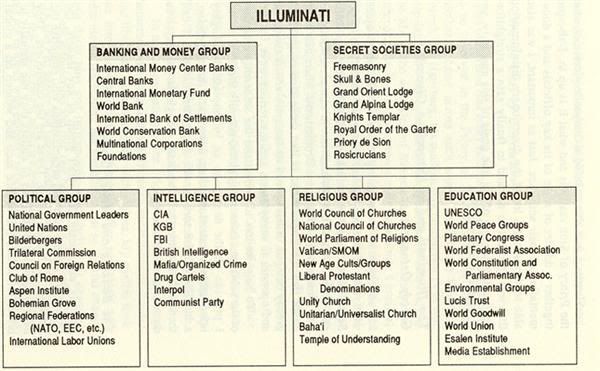What was the Red Scare of 1919-1920?
Mar 01, 2015 · The Red Scare was a time where the American government feared the rise of Communism in the United States. For this reason, anyone that expressed sympathy toward Communism was often imprisoned and/or deported.
How did the Palmer Raids contribute to the Red Scare?
Dec 10, 2019 · Alexander Mitchell Palmer (May 4, 1872 – May 11, 1936), was an American attorney and politician who served as the 50th United States attorney general from 1919 to 1921. He is best known for overseeing the Palmer Raids during the Red Scare of 1919–20.
How did the Red Scare influence the Sacco&Vanzetti case?
The Justice Department raids, which were known as the “Palmer Raids” because they had been ordered by Attorney General A. Mitchell Palmer, initially were praised as necessary acts, but they also incited a counterreaction that was one reason for the Red Scare’s demise by mid-1920.
How did the Wilson administration react to the Red Terror?
Apr 01, 2009 · Exhibit No. 2 is the manifesto of the Third Communist International adopted at Moscow, March 2-6, 1919, and signed by Comrades C. Rakovsky, N. Lenin, M. Zinerzen, L. Trotsky and Fritz Platten. It ...

What did Mitchell Palmer do illegal?
In May 1920, an influential pamphlet, Report upon the Illegal Practices of the United States Department of Justice, was written and circulated by 12 prominent lawyers, including Felix Frankfurter and Zechariah Chafee Jr., charging Palmer with conducting illegal searches, the mistreatment of prisoners, and the use of ...
What did attorney general Palmer do?
Mitchell Palmer, in full Alexander Mitchell Palmer, (born May 4, 1872, Moosehead, Pennsylvania, U.S.—died May 11, 1936, Washington, D.C.), American lawyer, legislator, and U.S. attorney general (1919–21) whose highly publicized campaigns against suspected radicals touched off the so-called Red Scare of 1919–20.
How did the Palmer Raids violate the Constitution?
The raids were direct violations of First Amendment rights to freedom of speech and freedom of press. The raids also violated the due process clause of the Fifth Amendment, as many individuals were arrested and detained without warrants.Oct 8, 2014
How did the government react to the Red Scare?
Enraged by the bombings, the United States government responded by raiding the headquarters of radical organizations and arresting thousands of suspected radicals. Several thousand who were aliens were deported. The largest raids occurred on January 2, 1920 when over 4000 suspected radicals were seized nationwide.
What was Eugene Debs accused of?
On June 16, 1918 Debs made an anti-war speech in Canton, Ohio, protesting US involvement in World War I. He was arrested under the Espionage Act of 1917 and convicted, sentenced to serve ten years in prison and to be disenfranchised for life.
What did attorney general A Mitchell Palmer believe that he needed to protect the American people from?
Palmer believed that communism was “eating its way into the homes of the American workman.” Palmer charged in this 1920 essay that communism was an imminent threat and explained why Bolsheviks had to be deported.
Which attorney general created a Red Scare in 1920 by arresting 5000 suspected communists and anarchists who were held without trial and denied their basic civil rights?
Attorney General A. Mitchell PalmerPalmer raids were a series of violent and abusive law-enforcement raids directed at leftist radicals and anarchists in 1919 and 1920, beginning during a period of unrest known as the “Red Summer.” Named after Attorney General A. Mitchell Palmer, with assistance from J.Feb 1, 2018
Why did Attorney General A Mitchell Palmer launch a series of raids against suspected anarchists and communists?
Attorney General A. Mitchell Palmer launch a series of raids against suspected Communists? He believed that a Communist revolution was imminent in the United States, and he needed an issue on which to campaign for the 1920 Democratic presidential nomination.
Was the Red Scare constitutional?
United States, the Supreme Court limited Congress's ability to circumvent the First Amendment, and in 1967 during the Supreme Court case United States v. Robel, the Supreme Court ruled that a ban on communists in the defense industry was unconstitutional.
What were Americans afraid of during the Red Scare?
The First Red Scare (1919-1921) was fueled by Americans' fears that the Bolshevik Revolution in Russia would spread to the United States.
Who led the 1st Red Scare?
First Red ScarePart of the Revolutions of 1917-1923"Step by Step" by Sidney Greene (1919)LocationUnited StatesCauseOctober and Russian Revolution of 1917ParticipantsLee Slater Overman Josiah O. Wolcott Knute Nelson A. Mitchell Palmer J. Edgar Hoover7 more rows
What was the first red scare caused by?
First Red Scare: 1917-1920 The first Red Scare occurred in the wake of World War I. The Russian Revolution of 1917 saw the Bolsheviks, led by Vladimir Lenin, topple the Romanov dynasty, kicking off the rise of the communist party and inspiring international fear of Bolsheviks and anarchists.Feb 28, 2020
When did the Red Scare end?
The fighting in World War I ended on November 11, 1918, but the ceasefire halted only one of wars America was engaged in during the years 1917-1920. Another war, the internal battle against revolutionaries and radicalism, soon intensified into a national fury that became the twentieth century’s first “Red Scare.”.
Why was Eugene Debs in prison?
Debs, the head of the Socialist Party, was sentenced to 10 years in federal prison after he declared in a speech that workers were being sent to death to fight a capitalists’ war. Eugene Debs is pictured here in 1921 after being released from his prison sentence.
What did Wilson say about the war?
During the war, Wilson stated he would not tolerate anyone who would “inject the poison of disloyalty into our most critical affairs.”. The administration saw the war as a progressive crusade to “make the world safe for democracy” and to promote a rational social order, harmony, patriotism, and Americanization at home.
How many people were arrested in the Palmer Raids?
Perhaps 10,000 people were detained and 4,000 arrested without due process of law. Eventually, 3,000 were deported, including the anarchist and activist Emma Goldman, who was sent to Russia. These men were arrested on January 2, 1920, in New York City as part of the Palmer Raids.
Which amendment guarantees freedom of speech?
The First Amendment , which guarantees free speech, free press, and freedom of assembly. The Second Amendment, which guarantees a right to bear arms. The Fourth Amendment, which protects against unreasonable search and seizure. The Fifth Amendment, which guarantees due process.
Where were the bombs intercepted?
Most of the bombs were intercepted in post offices, but one sent to a Georgia senator badly maimed a housekeeper. More ominous were the eight bombings of June 2, in which explosives detonated almost simultaneously at the homes of public figures in eight cities.
Where did the first strike happen?
The first occurred in Seattle, where a strike by members of the shipbuilding trades escalated into a general strike by 65,000 workers. A few months later, most of Boston’s police force went on strike, which left the city vulnerable to crime sprees.
What was the Red Scare?
During the Red Scare of 1919-1920, many in the United States feared recent immigrants and dissidents, particularly those who embraced communist, socialist, or anarchist ideology. The causes of the Red Scare included: World War I, which led many to embrace strong nationalistic and anti-immigrant sympathies;
What were the causes of the Red Scare?
During the Red Scare of 1919-1920, many in the United States feared recent immigrants and dissidents, particularly those who embraced communist, socialist, or anarchist ideology. The causes of the Red Scare included: 1 World War I, which led many to embrace strong nationalistic and anti-immigrant sympathies; 2 The Bolshevik Revolution in Russia, which led many to fear that immigrants, particularly from Russia, southern Europe, and eastern Europe, intended to overthrow the United States government; 3 The end of World War I, which caused production needs to decline and unemployment to rise. Many workers joined labor unions. Labor strikes, including the Boston Police Strike in September 1919, contributed to fears that radicals intended to spark a revolution; 4 Self-proclaimed anarchists' mailing bombs to prominent Americans, including United States Attorney General A. Mitchell Palmer and United States Supreme Court Associate Justice (and former Massachusetts Supreme Judicial Court Chief Justice) Oliver Wendell Holmes, Jr.
What was the Bolshevik Revolution?
The Bolshevik Revolution in Russia, which led many to fear that immigrants, particularly from Russia, southern Europe, and eastern Europe, intended to overthrow the United States government; The end of World War I, which caused production needs to decline and unemployment to rise. Many workers joined labor unions.
How many radicals were arrested in the 1920s?
The largest raids occurred on January 2, 1920 when over 4000 suspected radicals were seized nationwide. Over 800 were arrested in New England from locations that included Boston, Brockton, Chelsea, Fitchburg, Lawrence, and Lynn.
What is May Day?
May Day, also known as International Workers' Day, was celebrated by many socialists, communists, anarchists, and unionists . The failure of these plots to materialize, coupled with increased criticism of the Palmer Raids, brought these raids to an end.

Popular Posts:
- 1. who is paul mccartneys current attorney
- 2. scammed into cosign a loan,what attorney can help in mahoning county,ohio+?
- 3. what does a power of attorney contain
- 4. how to vote for state attorney florida
- 5. who is jeff childers attorney
- 6. why do you have to include your social security number on your power of attorney form
- 7. who is jeff rosen district attorney
- 8. how much money can an attorney hold in trust florida
- 9. okay google where is pender county district attorney office
- 10. how often do courts award attorney fees cybersquatting case